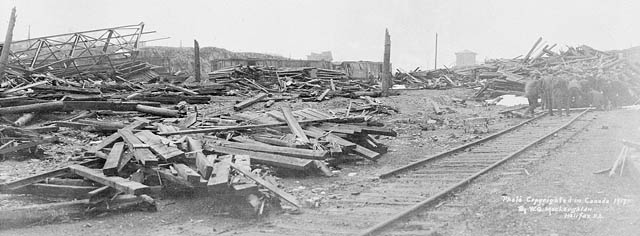Throwback Thursday: The Canadian Disaster Behind Boston’s Christmas Tree
Each year the City of Boston receives a Christmas tree from Nova Scotia. The gift promotes Christmas tree exports and goodwill between the regions, but it’s also a token of thanks for our city’s response to the Halifax Explosion on December 6, 1917.
In annual local news stories that report on the Christmas tree lighting ceremony, this historical event that inspired it usually receives a quick mention. At 96-years-old, it’s a bit of a footnote. But the more one learns about it and sees images like the one above, the easier it becomes to realize that it was, in fact, an epic disaster.
During World War I, the SS-Mont Blanc, a munitions-filled ship bound for Europe, collided with another vessel in a narrow strait beside the city of Halifax. A fire started on board. Shortly thereafter, the ship exploded, with a force that made it the most powerful man-made blast in human history up to that point. It killed about 2,000 people, and left much of the city in ruins.
Boston responded by sending people and supplies that very day, and set up the Massachusetts-Halifax Relief Committee to help with rehabilitating the city for years afterward. And so a year later, Halifax sent Boston a Christmas tree as thanks for their response. The tradition was revived in 1971, and to this day, the Nova Scotia government takes care to pick a quality tree to send our way. This year, it’s a 47-foot white spruce. It’s the one you see on the Common this month, a symbol of a cheery holiday season, but also an echo of a lethal disaster.



